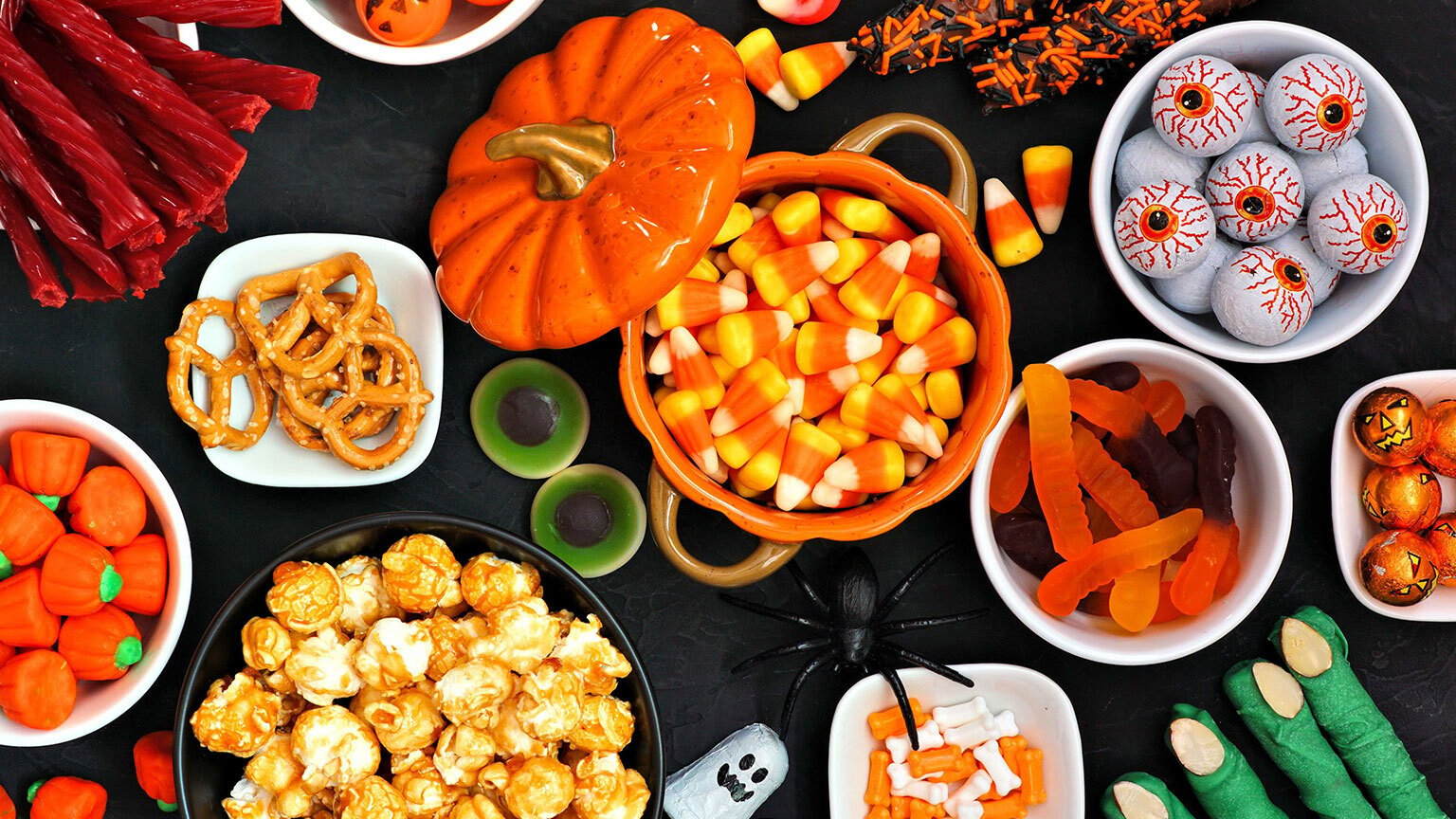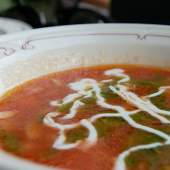Halloween

“The children running home
Beneath a twilight sky
Oh, for the fun of them
When I was one of them…”
--Johnny Mercer/Barry Manilow, “When October Goes”
"Halloween was confusing. All my life my parents said, 'Never take candy from strangers.' And then they dressed me up and said, 'Go beg for it.'"
--Rita Rudner
It’s a sure sign that fall is in full swing when you see an army of miniature ghosts, goblins, and monsters making its way up your sidewalk, bags and buckets in hand. Yes, Halloween has arrived, and you had better be ready to dispense goodies to the young trick-or-treaters who ring your doorbell, or else. Even if you have to do it differently this year. Where did this odd annual tradition come from, and what kinds of “treats” have been given out over its history?
Trick-or-treating in some form has existed in the United States since the 19th century, but the custom, or vestiges of it, can be traced back to ancient ethnic and religious festivals and medieval rites. Halloween very likely originated with the Celts in ancient England, Ireland, and Scotland, who marked October 31 with a festival called Samhain, a night on which many believed that the dead came back to life. Celebrants included villagers in disguises made from animal skins, who lit bonfires and left generous gifts of food and drink to ingratiate themselves with evil spirits. Christians today still celebrate the dead at this time, with All Saints’ Eve on Halloween, All Saints’ Day on November 1, and All Souls’ Day on November 2 – the three-day observance is known collectively as Allhallowtide, or Season of the Dead.
Subsequently (no doubt wanting to be on receiving end of all that bounty), people began dressing themselves as demons, phantoms, and other frightening apparitions who traversed their villages demanding food and libations – this practice was known as “mumming.” It was entirely transactional – wealthy families were expected to open their doors to the poor, who promised to pray for the residents’ departed loved ones in exchange for money and/or a “soul cake” or pastry. Later, instead of a prayer, the supplicants would offer up a song, a dance, a joke, or a “trick” for a treat. Eventually, this evolved into our familiar Halloween custom, as kids took up the practice.
The first written American reference to “trick-or-treating” dates back to the 1920s, when the “treats” given out to costumed children were coins or toys and homemade confections – cookies, small cakes, fruits and nuts, popcorn balls, candied or caramel apples, fudge, or hand-pulled taffy.
Trick-or-treating really took off after World War II sugar rationing concluded in 1947; after that, mass-market candy makers got into the act and have never looked back. Today, Halloween is America’s second-largest commercial holiday, with more than $2.5 billion spent on candy annually. The popularization of Halloween in American culture may also have gotten a boost from two influential entities: cartoonist Charles M. Schulz and the Walt Disney Company. Over Halloween weekend in 1951, Schulz’s Peanuts comic strip depicted Charlie Brown, Lucy, Linus, and their friends trick-or-treating. The following year, movie-going families saw Donald Duck (and his nephews Huey, Dewey, and Louie) taking part in the practice as well.
Seeing an opportunity for a little altruism amidst the Halloween revelry, UNICEF asked trick-or-treaters to carry small branded cardboard boxes on their neighborhood routes, to collect donations of spare change from residents along with candy. The campaign was highly successful, and to date has raised upwards of $175 million to benefit the U.S. Fund for UNICEF.
While “fun-sized” chocolate candy bars have long been a clear favorite with trick-or-treaters, there is one confection that is synonymous with Halloween (although nobody seems to know why): candy corn. As Halloween treats go, it isn’t at the top of anyone’s popularity list, but it is surely one of the most enduring, having been invented in the 1880s. This confection, made from corn syrup, sugar, marshmallow, fondant, and food coloring, was the brainchild of George Renninger of the Wunderlee Candy Company, who, having observed that at least half of America’s workforce in that era were farmers, marketed this new candy as “Chicken Feed,” packaged in boxes that sported an illustration of a rooster. Later, the Goelitz Candy Company (now the Jelly Belly Candy Company) took over production. They still make it today, and sell a lot of it in advance of Halloween.
So, once a year, there will likely be a lot of candy in your house, whether it’s collected by kids or over-bought by adults for distribution. Try to ration it (good luck with that!), or get creative!





